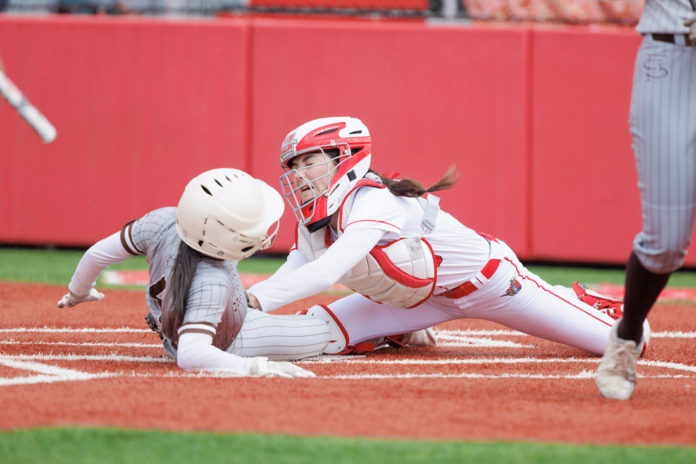
A major rule change involving usage of electronic devices in high school softball has been approved by the National Federation of High Schools’ Softball Rules Committee. The change will go into effect with the upcoming 2024-25 school year softball season, which will take place in spring 2025.
The new rule allows coaches to use electronic devices in the dugout for one-way communication to the catcher while the team is on defense. That change was the highlight of the NFHS Softball Rules Committee’s meetings, which were held June 9-11 in Indianapolis. The rule recommendation was then approved by the NFHS Board of Directors.
High school softball in California adheres to rules set down by the NFHS. The NFHS states that in their most recent survey, 344,952 girls in 15,406 high schools played fast-pitch softball in 2022-23 making it the fifth-most popular girls sport, while an additional 6,058 girls participated in slow-pitch softball.
“This change is the result of analysis of current data, state association experimentation and a positive response from the membership,” said Sandy Searcy, NFHS director of sports and liaison to the Softball Rules Committee. “The committee has made these changes to support the use of emerging technology within the sport of softball. Being a permissive rule, the use of this one-way electronic communication will allow those who choose to embrace the technology an additional option to communicate with the catcher while on defense.
“It will also maintain the ability for those who prefer a more traditional approach to communicate using signals or a playbook/playcard to continue that approach.”
Accommodating one-way communication to the catcher resulted in updates to two different sections of the NFHS Softball Rules Book, starting with Rule 1-8-6. Devices such as earpieces, electronic bands and smartwatches are now permitted as an exception within the rule provided the player does not utilize said device to return correspondence to the coaching staff.
Prior to this change, team personnel could “record or transmit information pertaining to their players or team’s performance,” but could not communicate that information directly to players on the field during play.
There are other small rule changes. One of them relates to the updated rule on usage of electronic devices. The penalty for violators is now that they are subject to ejection unless the offense is ruled to be “of a minor nature.”
The rule change on one-way communication devices also states that coaches are prohibited from using the device “to communicate with any other team member while on defense or any team member while on offense” and the coach cannot use the device “outside the dugout/bench area.”
During the past two years, coach Andrew Barragan’s Haybalers have cemented their place among the elite of Central Coast Section softball and in fact, in the entire state of California.
Hollister has recorded a 52-8 mark during that span, including two straight Pacific Coast Athletic League, Gabilan Division titles. They have participated in the CCS Open Division playoffs both years, with one title and one third-place finish, and went on to NorCal competition in each season. The Balers picked up a NorCal title in 2023.
Hollister, along with all their opponents, will now have the option of electronic communication to the catcher. It is presumed this will speed up and simplify coaching direction on topics such as which pitch (e.g., riseball, change-up, etc.) to throw and to which location.









